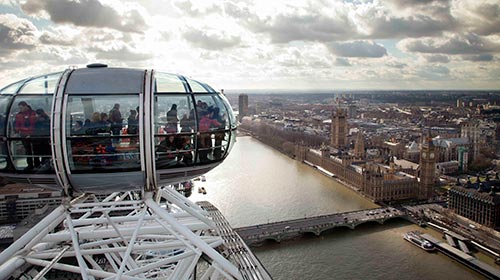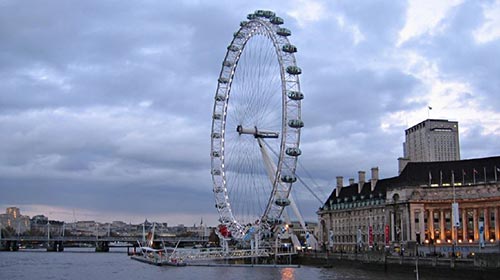London Eye
The London Eye was built as part of London’s Millennium celebrations. The idea came from an architects competition in 1993. The competition itself never declared a winner, so Mark Barfield Architects, who created the design, took on the challenge of developing the project and finding the site.

It is the most popular commercial tourist attraction in the country; in normal times 3.5 million people take the very slow – 0.6mph – ride every year. Now? Zero; it’s closed for the pandemic of course. There are thirty-two capsules on the wheel, and if you have a peculiar kind of OCD you’ll be pleased to know that it’s one for every borough in London. Although it’s somewhat spoiled as there’s no capsule 13, so the numbers go from one to 33.

The wheel turns so slowly that it takes 30 minutes to complete one rotation. The actual speed is 23cm per second, so passengers get on and off while their capsule is at ground level without it stopping.
Each capsule weighs ten tons, and the wheel overall weighs an astounding 1000 tons. Weirdly for something so insanely heavy and complex to build, the London Eye was originally intended to be a temporary structure. It was going to stay for just five years, but two years into this Lambeth Council gave it a permanent licence.
Did you know? The London Eye is not the city’s first wheel! A little over a century earlier the Great Wheel or Gigantic Wheel was built for the Empire of India Exhibition at Earls Court, and it was in action from 1895 to 1906. It was a huge ferris wheel, but the London Eye is strictly speaking not a ferris wheel; it is supported on only one side and the capsules sit on the outside of the rim instead of hanging from it. Technically it is a cantilevered observation wheel – the largest in the world until 2006 when China’s Star of Nanchang beat it.